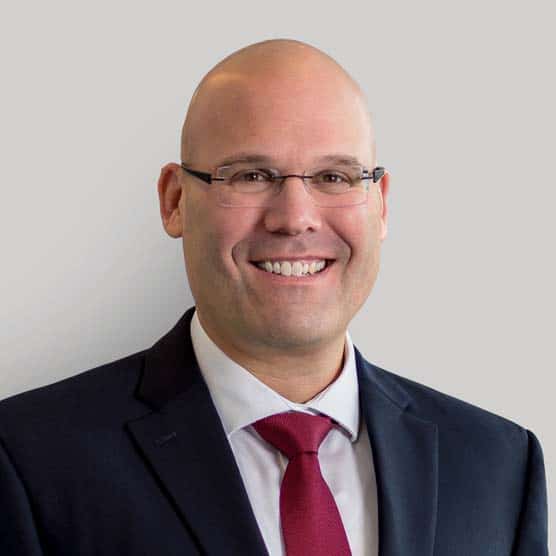The National Investment Center (NIC) recently held its first in-person event since the start of the pandemic, a welcome development as there is no substitute for the networking, collaborating, deal-making, and sharing of best practices that occurs at NIC’s highly respected annual conferences.
As seniors housing and skilled nursing operators, capital providers, and sector stakeholders converged in Houston for the conference, there were a few reoccurring themes dominating discussion: the continued challenges of staffing, the looming threat of inflation, and ongoing efforts to restore occupancy to pre-COVID levels. Performance at seniors housing and care communities, particularly on the higher end of the acuity spectrum, will be a focal point for the foreseeable future, even more so than in typical times—a message that came through loud and clear throughout the conference.
The conference began with NIC president and CEO Brian Jurutka reminding the audience that despite the immense challenges, long-term demographics remain favorable for the industry. He referenced recent AARP data that predicts a dramatic decline in the availability of family caregivers, making congregate care settings all the more essential.
Likewise, discussions throughout the conference made it clear that investors will continue to see this as an attractive industry. There is still yield, so we will continue to see money coming into the sector. From a financial perspective, there are still ample reasons to be optimistic, given the continued low interest rates, general availability of capital, increased agency caps and focus on mission-driven sectors, and the robust merger and acquisition (M&A) market.
Seeking Stabilization
As discussion permeated the halls, it was clear that conference-goers were eager to turn the page on the past 18 months. Lessons have been learned, new policies have been enacted, and capital is at the ready. The one thing lacking? In a word, stabilization. The term “stabilized deals” was omnipresent at this year’s conference. Specifically, how there is tremendous need for more of them and how the financial stage is set for their arrival. Variations of the phrase “now we just need stabilized deals” were heard during plenty of sessions and in many meeting rooms. Although there is no quick fix for this dilemma, most seemed to believe things were moving in a positive direction. From the optimist’s perspective, with a little patience and a lot of fortitude, we will soon be seeing an increase in stabilized properties across the country, which should cause a ripple effect of positive developments.
As for current occupancy trends, NIC MAP data found that skilled nursing occupancy increased to 75% in July, an increase from January 2021’s pandemic low of 71%, but still far removed from the pre-pandemic level of 86% in February, 2020. Clearly issues like the Delta variant, staffing woes, and other challenges are slowing the occupancy recovery.
The Delta Pause
The pausing effect the Delta variant has had on the recovery was a topic discussed in the session I was fortunate to moderate, “Debt Market Trends and the Pace for Dealmaking.” In regard to the overall state of the market, Kelly Sheehy of Artemis Real Estate Partners pointed out that industry occupancy picked up through vaccine rollouts before hitting a pause from the Delta variant, which significantly slowed business plans. Private equity, life companies, and other alternative financing structures helped fill that gap, particularly for non-stabilized properties. Sheehy argued that despite the Delta pause, there is still positive momentum heading into 2022.
From the bank perspective, Imran Javaid of BMO Harris Bank noted that banks are back to lending, saying they are “cautiously back in.” Permanent debt is likewise available, as discussed by Lee Delavaris from KeyBank Real Estate Capital, who pointed out that interest rates remain low and, in what was becoming a familiar refrain, “now we just need stabilized deals.” For the stabilized deals that do come to market, there will be plenty of competition from banks and the agencies.
Sheehy noted that adding to the dilemma is that fact that approximately 1,000 new senior living communities were delivered from 2017 to 2020, and absorption hasn’t yet caught up. Some communities in good markets and with strong operations might simply be the victim of bad timing.
One thing we all agreed on was that you truly need to understand the market in this environment. Knowing how many new buildings are in the area, analyzing absorption, and understanding other local and national factors at play are crucial when assessing a facility for possible financing.
Inflation Looms
In one of the most talked-about sessions, Nobel prize-winning economist Paul Krugman and former Secretary of the U.S. Treasury Dr. Lawrence H. Summers discussed macroeconomics and capital market trends. Staffing challenges and the prospect of high inflation were the main drivers of the conversation, as Krugman cited depleting cash reserves as a reason many people will be returning to the workforce. Even with an increase in labor supply, Summers warned, challenges remain, as employers look to attract and retain talent through increased wages and other benefits that make employees feel valued. As a result of those efforts, costs will inevitably increase, making things difficult for operators and likely accelerating inflation.
“We are looking at an economy with a record level of vacancies, with a record level of workers quitting, and with near-record low real interest rates,” Summers pointed out, arguing that combining those factors with current federal fiscal policy results in “a prescription for inflation staying at problematic levels.”
Other notable sessions included a look at funding and policy proposals, as well as a discussion of how to solve for the “forgotten” middle market, which by 2029 will consist of 14.4 million seniors with enough financial resources to be disqualified from public programs, but too little to afford today’s senior housing options. Informative and innovative ideas were shared and important conversations continued.
Having attended the recent fall event with over 2,400 other registrants, I can attest that NIC picked up right where they left off—delivering an array of informative sessions led by impressive panelists that helped paint the picture of a seniors housing and care industry recovering from the delta variant and continuing its post-COVID rebound.

